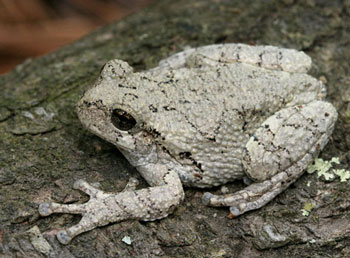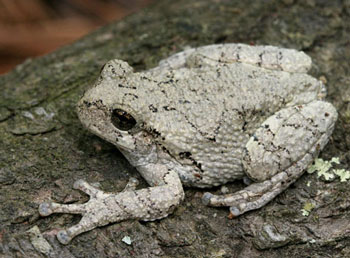Study says that male treefrogs that can trill longer and more frequently are preferred mates.
Male gray treefrogs that can multitask are preferred by female Cope's gray treefrogs (Hyla chrysoscelis) when it comes to choosing a mate, according to a report published in the August 2013 issue of Animal Behavior by a group of University of Minneosota researchers. The researchers found that female tree frogs preferred male frogs that maintained the capability to produce multiple signals when they "trilled" or called out looking for a mate. They determined that the female frog preferred male frogs that could call out longer and more frequent series of pulses. A typical gray treefrog call ranges in duration between 20 and 40 pulses per call, with five to 15 calls per minute. The researchers listened to recordings of 1,000 calls and determined that males must tradeoff between call duration and call rate, meaning that males that produce longer calls do so at much slower rates.

Patrick Coin/Wikimedia
Gray's treefrog
The researchers say in their study that males which perform two or more difficult tasks at the same time are better quality males than those that cannot multitask. This supports their hypothesis that explores how multiple signals by a male treefrog influence the behavior of a female treefrog. The researchers conducted the study in support of Bell's goal to find out how female treefrogs are capable of differentiating individual mating calls when there are a large number of males calling at the same time.
Want to Learn More?
The lead author of the study is postdoctoral researcher Jessica Ward, who works in the laboratory of University of Minnesota’s Mark Bee, a professor at the university's College of Biological Sciences’ Department of Ecology, Evolution and Behavior.
Cope's gray treefrogs (Hyla chrysoscelis) are virtually indistinguishable from the gray treefrog (Hyla versicolor). You can only tell the difference by their mating calls. They grow up to 2 inches in length and can be found east of the Rocky mountains in the United States and Canada. They are listed as a species of Least Concern with the IUCN.



